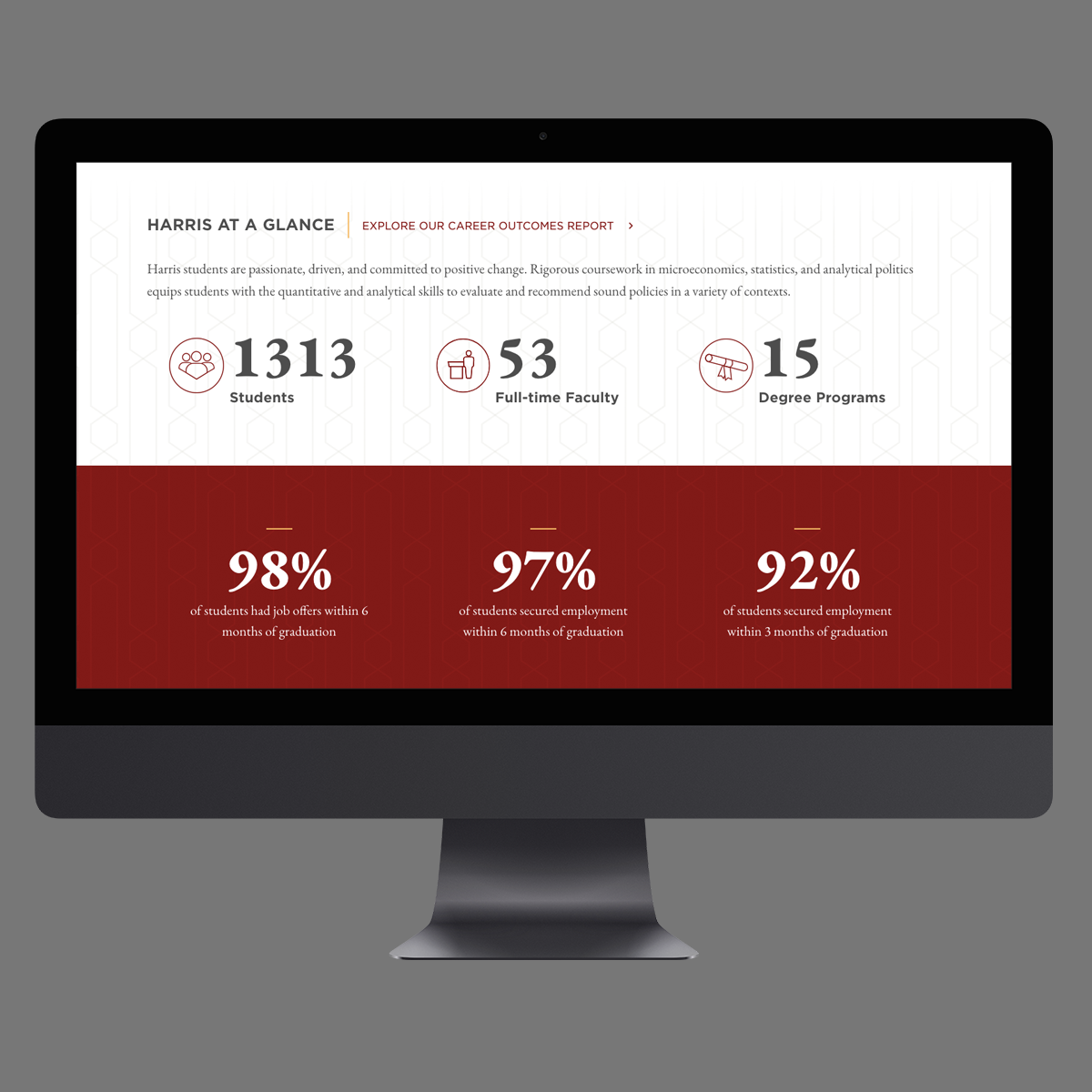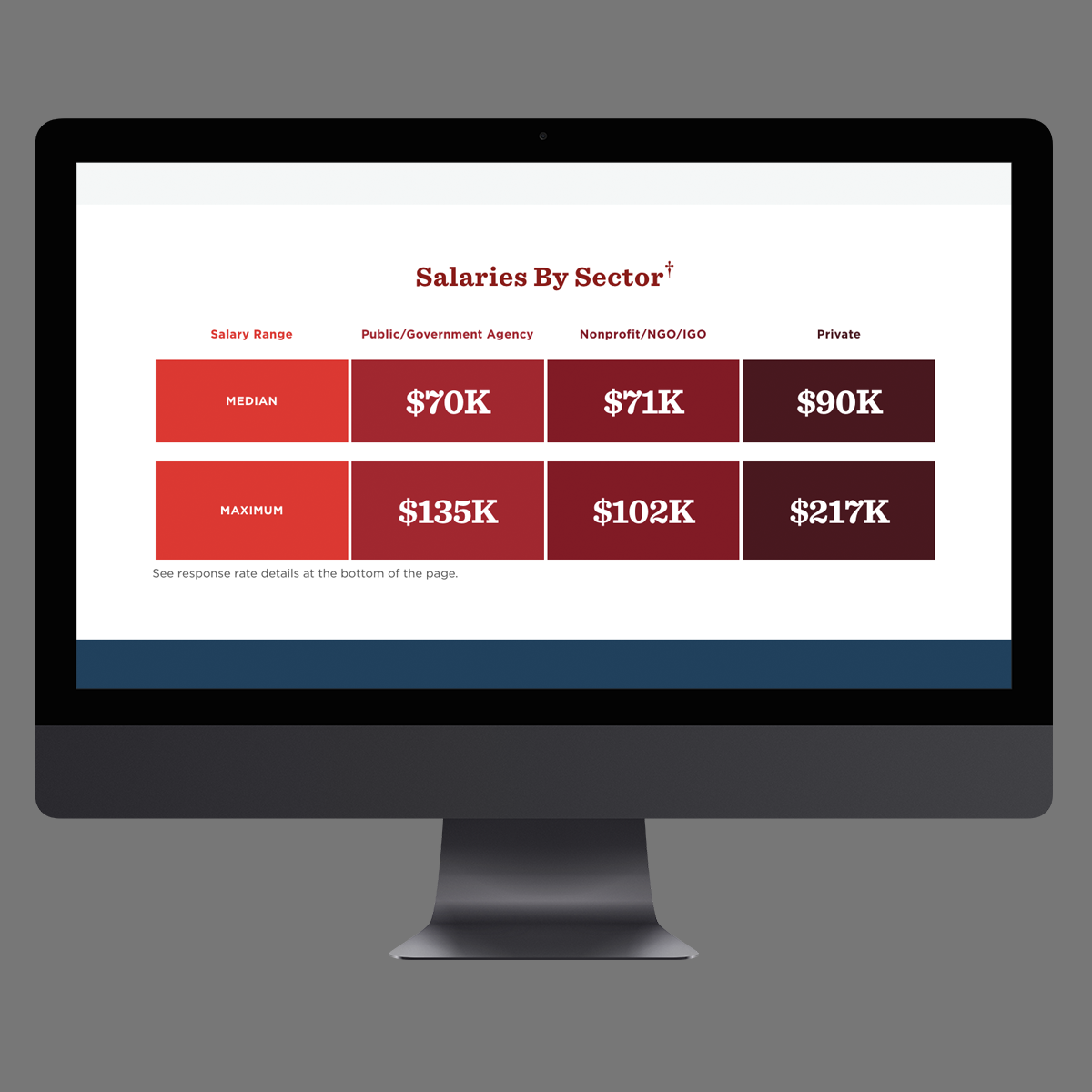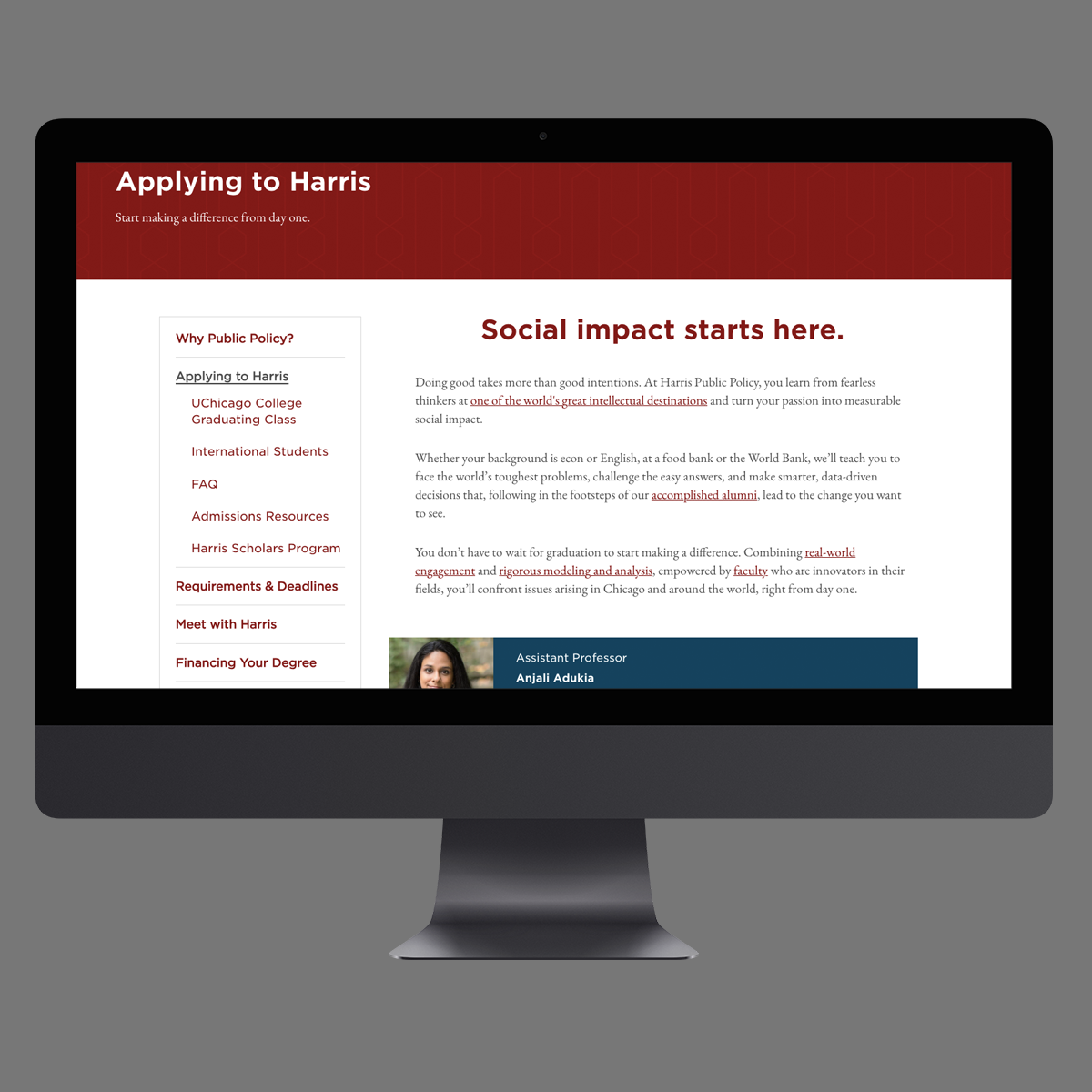Chicago Harris School of Public Policy
Role (Junior UX Designer and Researcher): Client Communication, Usability Testing, UX Design, UX Research
The University of Chicago’s Harris School of Public Policy is one of the top academic institutions for public policy education and research in the world. As a Junior UX Designer and Researcher at Sandstorm Design, I worked directly with representatives from the Harris School of Public Policy to perform a redesign of the website.
Problem:
The University of Chicago saw a 12% drop in enrollment from 2020 to 2021.
Solution:
Showcasing successful outcomes and quantitative impact from the school.
Research:
Usability Testing and User Interviews
Usability testing and follow-up interviews provided insights on why current students chose Harris.
According to the user interviews conducted, prospective students’ decisions came down to whether they believed that they would see a return on investment from Harris. From the interviews, we were able to break down the different factors that prospective students considered before applying or enrolling at Harris such as:
- Salary outcome
- Employment rate
- Cost of attendance
- Time of decision
- Location
- Ease of application
Journey 1: Multiple Applications
Users who applied to multiple colleges had a much more extensive user journey. Not only did they do in-depth research about other competing programs, they also did further research into the University of Chicago than their counterparts.
Journey 2: Only Harris
Users who only applied to Harris did not interact with as much of the website as their counterparts. In the research, we discovered that users who only applied to Harris already had prior information and did not have to go through as many web pages. While their counterparts did intensive research immediately after the decision letter, these users waited until the financial aid decision came in.
Competitive Analysis: Public Policy Colleges
As part of my competitive analysis, I looked at other top-ranked public policy programs and how they:
- Differentiated their programs
- Recruited students
- Communicated the admission process
- Balanced their website between use cases for students
and academics.
Solutions:
Balancing Accessibility with User and Stakeholder Feedback
Previously, there was a strong hero video that autoplayed on the home page. This was an issue for users with motion sickness and slow internet. However, our stakeholders and data from the user interviews showed that there was a strong desire to keep the video. As a result, we reduced the size of the video and added in a reduce motion button.
There were also issues with text over images on the previous site. This issue was amended by designing new components that were compatible with screen-readers.
Leveraging Quantitative Research
Based on the competitive research and interviews, we discovered that the University of Chicago, especially Harris, was notorious among students and academics for its strong emphasis in quantitative research. We utilized this understanding both in the messaging and design of the website itself, by communicating key information as data.
Recruiting Staff and Faculty
Aside from increasing enrollment, the client also had a goal of communicating the prestige of Harris as an institution to prospective staff and faculty members.
This was done by emphasizing the news, events, and research that occurred at the University of Chicago.
International Students’ Pain Points
From the interviews conducted with current international students, we discovered that they faced unique pain points. Despite being a core target demographic of the college’s recruiting efforts, international students often had more trouble navigating the admission process than domestic students. This is because international students have extra obstacles that they must address during the process.
The design of a user journey for international students accounted for the unique obstacles such as visa requirements and financing options.
Impact
While the overall number of students at Harris was down, the enrollment of international students (one of the main goals of this project), has increased. It is unclear whether the redesign had an impact on that. These results are also in alignment with broader college trends across the United States.
Other data such as acceptance rates and quality of visits were also not tracked.
It is unclear whether the results of this redesign were a net positive/negative.















